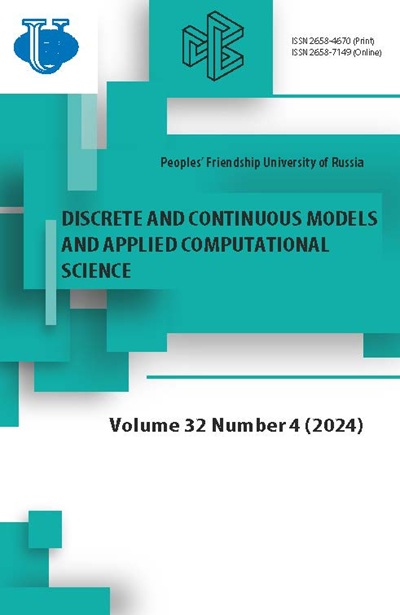Full Text
1. Introduction There are a number of important applied problems in which the solution has multiple singularities. In such problems, it is required to find a chain of sequentially located singularities. Similar problems are often found in the theory of special functions (elliptic functions, gamma function, etc.). Numerical methods are widely used to compile tables of special functions [
1] and for standard direct calculation programs [
2]. Standard schemes (for example, Runge-Kutta schemes) allow one to calculate smooth sections of the solution with good accuracy. However, near the singularity, the error of such schemes increases catastrophically. Direct continuation of the solution beyond the pole, as a rule, is impossible. Therefore, the solution is continued beyond the pole with some artificial techniques. Continuation through a number of poles is an even greater problem and requires the development of special procedures. The literature describes methods based on the Pade approximation [
3]-[
5] and on the approximation of the solution by chain fractions [
6]. Abramov and Yukhno proposed a special replacement for an unknown function that translates the solution into a non-singular one, see [
7] and the bibliography there. However, these methods are applicable only for calculating the transcendental Painleves, for which there is a lot of a priori information. In addition, the coefficients of the Pade approximation are calculated from the coefficients of the Taylor series, and to find the latter, you need to solve the original problem with some difference scheme. The problems that arise along this path are described above. In [
8], we have constructed the reciprocal function method which for the first time allowed to perform highly accurate calculations through a sequence of first-order poles. However, for poles of order
About the authors
Lomonosov Moscow State University; Peoples’ Friendship University of Russia (RUDN University)
Email: aa.belov@physics.msu.ru
ORCID iD: 0000-0002-0918-9263
Candidate of Physical and Mathematical Sciences, Associate Professor of Department of Applied Probability and Informatics of Peoples’ Friendship University of Russia (RUDN University); Researcher of Faculty of Physics, Lomonosov Moscow State University
1, bld. 2, Leninskie Gory, Moscow, 119991, Russian Federation; 6, Miklukho-Maklaya St., Moscow, 117198, Russian Federation
Keldysh Institute of Applied Mathematics RAS
Author for correspondence.
Email: kalitkin@imamod.ru
ORCID iD: 0000-0002-0861-1792
Doctor of Physical and Mathematical Sciences, Professor, Corresponding member of the RAS, head of department
4A, Miusskaia Sq., Moscow, 125047, Russian Federation
















